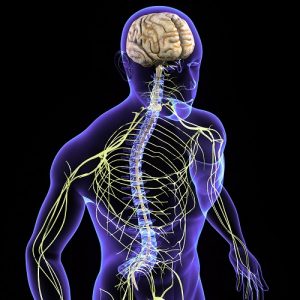Written by McKenzie Jones
What are Mammograms?
During your annual physical with the doctor, you may learn that it could be advantageous to have a mammogram. A mammogram is a simple medical procedure that uses low-energy x-rays to screen a human breast to detect potentially cancerous masses. In the US, an annual mammogram is the gold star procedure for early detection and is recommended as an annual procedure to anyone past the age of 40. Why is having a regular mammogram essential to women’s health? Read on to learn 5 reasons you should quit waiting around and schedule your annual exam today.
1. Early Detection Is Key
Cancer is a scary subject. However, if you are armed with facts and your own medical and testing data, you will be better prepared to face the road ahead. When you find cancer in its earlier stages, you have more treatment options available to you and a higher rate of long-term survival. Mammograms can “find” breast cancer roughly 5 years before you can feel it, which gives you more time to figure out your plan. The introduction of 3D mammography has also broadened the scope and abilities of cancer detection. Not only do 3D scans produce fewer false positives, but they have also improved detection rates by roughly 50%.
2. Mammograms are Smarter Than Fingertips
Women are encouraged to perform self-breast exams (SBEs) monthly for several reasons. Breasts are made up of uniquely irregular tissues and fats, and it’s good to get familiar with your breasts, chest, and armpit areas. This way, with time, you will be better equipped to feel if something is “off” or changing within your own body. Consider adding an SBE during your monthly menstruation to keep it recurring and regular. That being said, self-detection results in roughly 18-25% of breast cancer diagnoses, while mammograms can detect breast cancer in 87% of their screenees. Using multiple early-detection methods is a smart way to stay informed about your health.
3. Mammograms Have a Proven Track Record
Since 1990, an overall increase in regular mammograms in the US has helped reduce women’s breast cancer deaths by 30%. What a statistic! There is a direct connection between higher mammogram numbers and lower breast cancer-related fatalities. The process has also been streamlined due to successful detection rates. It is quite straightforward to get a mammogram referral from your primary care physician or an obgyn near me. The sooner you schedule and complete your mammogram, the better you’ll feel.
4. It’s Not Always Genetic
Yes, it is a fact that if you gave a genetic link to breast cancer, you have a higher likelihood of breast cancer. It’s super important that mammograms are a regular part of your life if you have a direct family member that developed breast cancer, so don’t play around or delay. However, it is also true that 75-85% of people diagnosed with breast cancer have no family history or known risk factors. Therefore, everyone must get regularly screened. Simply add it to the list of questions you have for your doctor during your annual physical, and they will be able to guide you in the right direction.
5. Time is of the Essence
Unfortunately, your risk factors increase and your long-term survival rates tend to decrease as you age. This is particularly noticeable after age 40 and continues as you get older. The age for an annual mammogram used to be set at 50, but studies have shown time and time again that finding out earlier than 50 affects your survival rates and complication risks. Since the recommendation has been lowered to 40 years, the number of breast cancer-related deaths has decreased.
Final Considerations…
One last thing to note: If you’re scared about scheduling a mammogram for any reason, consider an honest approach with your primary care physician. Explain your feelings, and allow them to reassure you. That is a completely normal reaction to have for something as daunting as cancer. Know that getting the facts will be better for your overall peace of mind. Schedule an OB appointment at your earliest convenience, and just check it off your list once and for all.
The American Institute of Health Care Professionals offers a full continuing education program leading to Certification as a Health Care Life Coach, you may preview our program by accessing this link.



 By Lucy Peters
By Lucy Peters Written By Lucy Peters
Written By Lucy Peters